Michael Craig-Martin on show at Alan Cristea Gallery
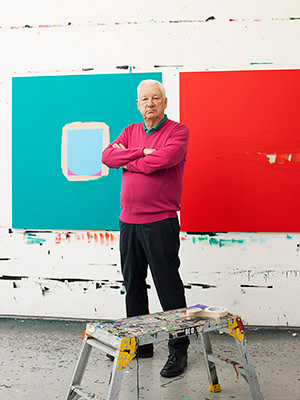
Simply sign up to the Life & Arts myFT Digest -- delivered directly to your inbox.
On a dank morning in north London, Michael Craig-Martin is a sudden dash of colour against the grey as he springs out of his studio to meet me. The V-necked sweater in a delectable shade of lavender-bluish-pink speaks of personal self-confidence (at 72 he retains a thatch of well-cut white hair and a distinct physical magnetism) as well as the expertise with which he chooses the grounds of his paintings: acid greens and brilliant yellows, zingy pinks and cobalt blues. The use of strong colour, applied evenly with a roller in a super-flat field across the entire surface of the canvas, is as distinctive as the meticulous line-drawn objects that sit within them.
Over the years, these objects, from the most ordinary – a fork, a hammer, a ladder, a coat-hanger – to modern design classics such as a Marcel Breuer chair or an Anglepoise lamp, have taken on the role of modern hieroglyphs, signifiers, open to multiple readings from the factual to the philosophical, all interpretations welcome. “I do think of the kind of art that I do as having a philosophical basis,” he says, “but I have an enormous following amongst kids!”
The objects are mute, manufactured, hard to read: sometimes they sit alone in the centre of the canvas, with the importance of an icon or the banality of a pack shot; sometimes they are paired, in dialogue with one another; sometimes they are scaled up to an enormous size, so that a safety-pin becomes an object of menace; sometimes he composes a great jumble of objects, their outlines overlapping, that suggests, simultaneously, emotional chaos and a family store cupboard that has exploded.
His sculptures also depict objects – often the same objects, three-dimensional versions of the line drawings, in brightly painted metal, or in neon and scaled up to greater than life-size. A selection of recent sculptures has just been installed outdoors at Chatsworth House in Derbyshire for an exhibition that opens later this month, promising visitors the chance to view the 17th-century house and its grounds through the frame of, for example, a pink stiletto-heeled shoe. Meanwhile in London he will be exhibiting screen prints at the Alan Cristea Gallery, alongside a show of single works by artist-printmakers he admires – among them Warhol and Lichtenstein, Picasso, Braque and Matisse.
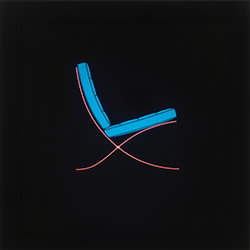
Very rarely do Craig-Martin’s works include a human figure, even in outline. I ask him why. “Every single thing that I do implies a human presence,” he says. “[The objects] always imply usage. It’s usage that motivates us; that’s what makes us change. So I see my work as deeply imbued with a human presence, but the human presence is you. I’m making a thing in which your completion of it is your understanding of what the thing is . . . I give you this little trigger and you bring this unbelievable wealth of knowledge and also personal feeling [to it].”
His images are deliberately generic. “When I started to make the drawings of objects, one of my main intentions was to be as non-hierarchical as possible. I wanted them to be very factual, very ordinary and styleless. I was trying to make a kind of styleless drawing and then, ironically, it has become my style.
“Because what I’ve created through the drawings – which I didn’t understand at the beginning – is a language. And the language is mine, and I can address anything I want so long as I pull it into my language. So I’ll take Duchamp, I’ll take Breuer, I’ll take works of great, high design and works of no design at all. I’m not trying to dictate these things. I am trying to touch as many areas of resonance as I can.”
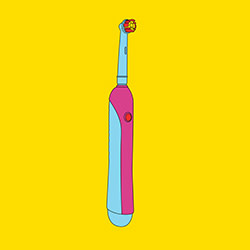
He used to draw everything freehand. Now he often uses photographs. “It’s so much easier to make images,” he says. “In the old days I actually had to have the object. I had to buy it in order to draw it. Now I do all the original drawings on the computer. I draw with a mouse, so there is no paper original any more. I’ve been doing it for 15 years or more. It’s second nature to me.”
He has lived, he says, through a time when the modernist design ethic of “form and function” has been thoroughly undermined by technology. In the 1970s, “you could tell what a thing did by what it looked like. What happens from the ’80s and certainly the ’90s on is that you’re much more aware of something being designed rather than engineered. The most obvious example is the telephone, which once looked like a telephone: you knew where to speak, and where to hear, and you held it in your hand. Now we have the mobile phone, and you can’t find where to speak and where to listen. None of us have any idea where the sound is coming from or where it’s going.”
It is 40 years since he exhibited one of his most famous works, “An Oak Tree”, in London. It consisted of a tumbler of water standing on a glass shelf high up on the gallery wall. Next to it was a printed sheet, with a Q&A, in which the artist is interrogated about the meaning of the work:
“Q. Could you describe this work?
“A. Yes, of course. What I’ve done is change a glass of water into a full-grown oak tree . . . ”
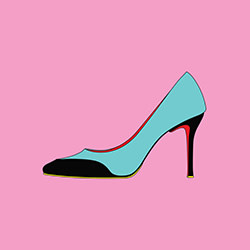
The spirit of Duchamp, the belief that the idea is as important as the form, has run through Craig-Martin’s work ever since he arrived here from the US in the mid-1960s, after graduating from Yale. (Though born in Dublin, he grew up in the US.) But his relationship with conceptualism is a complicated one. According to Tate director Sir Nicholas Serota, who has long followed Craig-Martin’s work, his earlier pieces were “more perceptual than conceptual”: “It was the difference between seeing and knowing, always played out in a very visceral, physical way. ‘An Oak Tree’ was also about the difference between seeing and knowing, but developed in more conceptual terms.
“A number of hardline conceptual artists thought that the work was too illustrational and that Michael was jumping on a bandwagon,” Serota adds. “There was a degree of scepticism [among them] about Michael as an artist. It was probably only really in the late ’70s and early ’80s, when he started the wall drawings, that he established a place both here and internationally.”
By his own admission, Craig-Martin came late to drawing, and even later to colour. “I didn’t really get into colour until the ’90s,” he says. “I was frightened of colour in the way that many artists were. Early conceptualism is really very puritanical. There were certain forbidden things in the world my art developed from: one was picture-making, which I knew was very dangerous territory to become involved in. And the other one was colour. Both of these are things that people from a conceptual point of view find decadent and, I suppose, decorative, and that implies a certain shallowness.” Having transgressed on both counts left him free to develop his own voice.
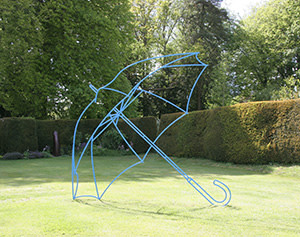
There was a time during the 1990s when he was probably better known as a teacher than an artist, after a group of students he had tutored at Goldsmith’s became Young British Artists – Damien Hirst, Sarah Lucas and Gary Hume among them. It’s easy to see how he might have been an attractive influence – transatlantic, non-judgmental, comfortable with the kind of conceptual thinking that gave them space. “He’s a permissioneer,” says the artist Richard Wentworth, who taught at Goldsmiths at the same time.
He gave up regular teaching in 2000 (he is emeritus professor of fine art at Goldsmiths) and since then has been working on international commissions, some of which have involved installations that take over entire interiors, as well as collaborations with architects, such as the Tate Modern architects Herzog and De Meuron, whom he worked with on the Laban Dance Centre building in Deptford, south London, in 2003.
Before I leave, he gives me a tour of the studio. The walls are lined with new canvases in different stages of completion; a couple of assistants are working away. “I’m a person who likes to get up in the morning and come to the studio and I want to work every day,” he says. “I’m very happy to be here. I like having something to do. And painting is really wonderful as a daily vehicle of exploration.”
As to meaning, he resists being drawn. “People who have the idea that you come closer to the meaning of the object by knowing the intention of the artist are in my view going down the wrong street entirely,” he says. “What they need to do is forget about that and look at what they’ve got. Look at what the artist is giving them. And the thing that is coming to them is the thing the artist meant.”
——————————————-
‘Objects of Our Time’ and ‘Master Prints’, Alan Cristea Gallery, London, March 28-May 2, alancristea.com
‘Michael Craig-Martin at Chatsworth’, March 16-June 29, chatsworth.org
Comments